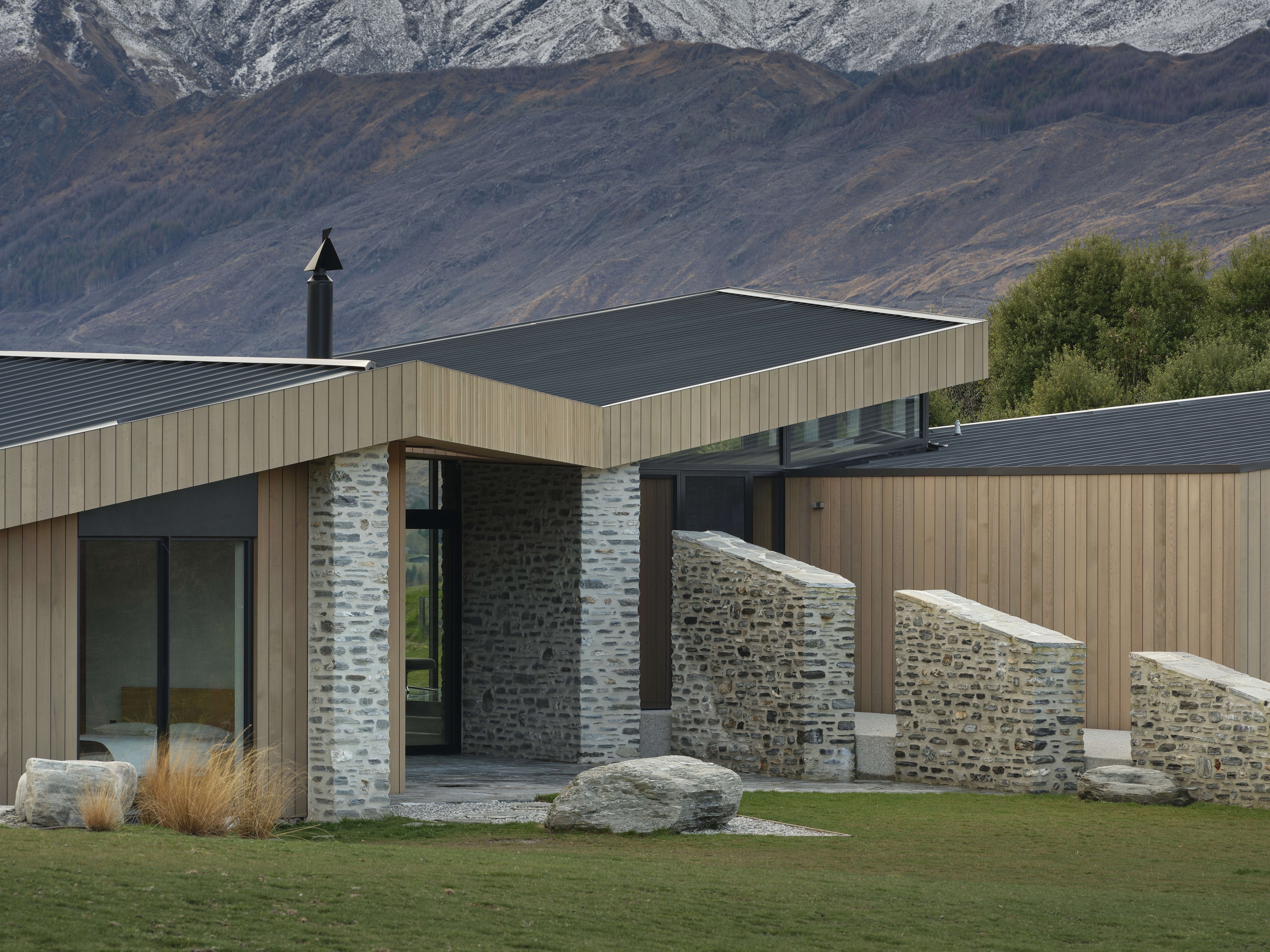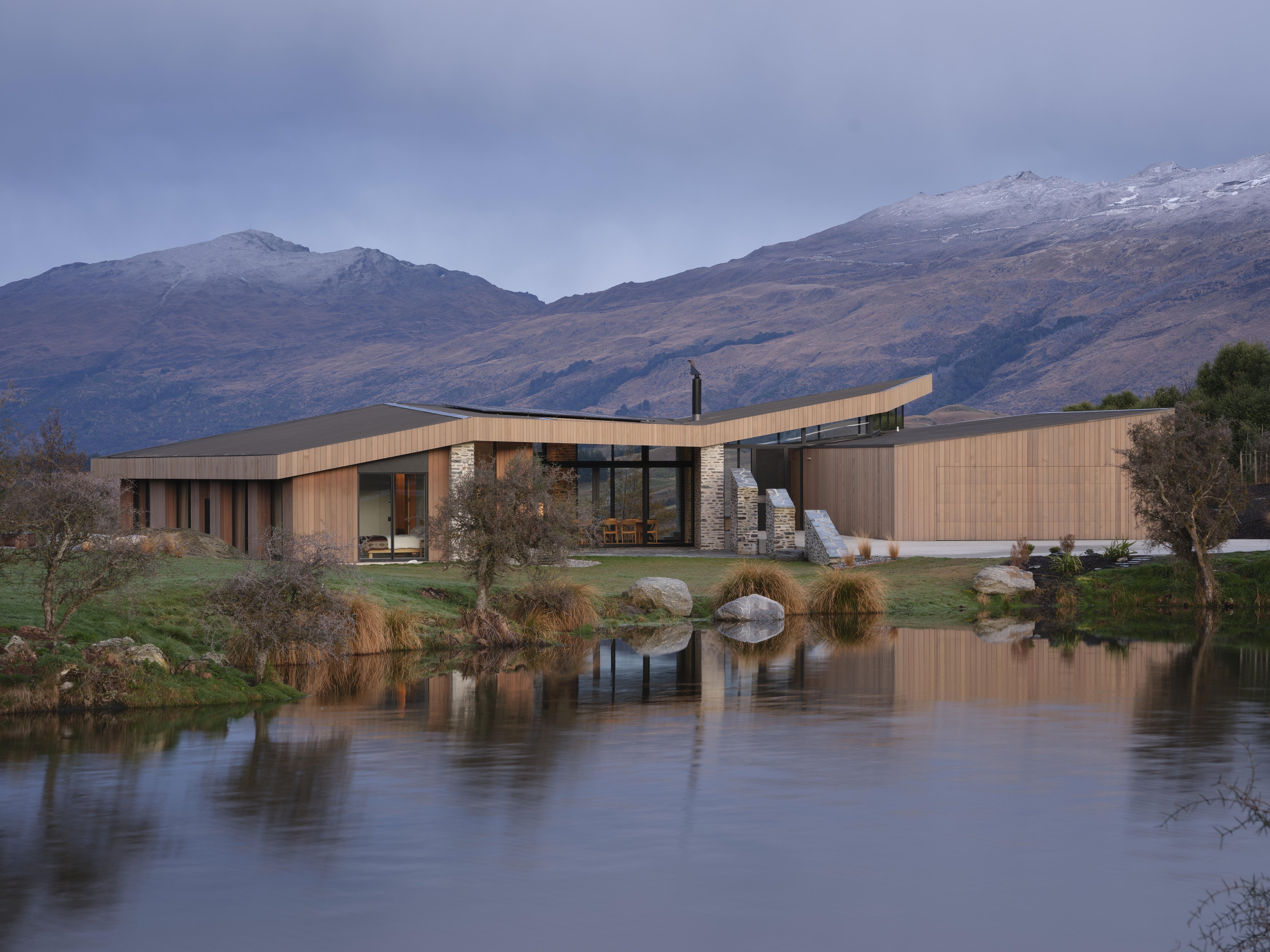
Sustainability and a connection to the landscape were key requirements for this holiday home near Queenstown.
Located 150m above Lake Hayes, it faces Coronet Peak but looks back to the Crown Range and The Remarkables.

Ducks and pūkeko are frequent visitors, hawks soar overhead searching for rabbits and from time to time, there are sightings of New Zealand’s native falcon.
The country’s most endangered bird of prey, kārearea lay their eggs in a "scrape" in the ground and are fiercely protective of them. At ground level, their colouring and form camouflage them well, and their wings fold over their young to hide and protect them.
Architects RTA Studio used this narrative to guide their design, drawing the roof to echo the surrounding mountains but also to be a "folding, wing-like shelter" that would protect the house and its occupants.
"Kārearea House" steps down over three levels. Living areas are on the north and west sides while bedrooms stretch along the southern edge of the site, where it is cooler and quieter. Connecting these two wings are the more informal kitchen-dining areas, with morning and afternoon terraces off either side.
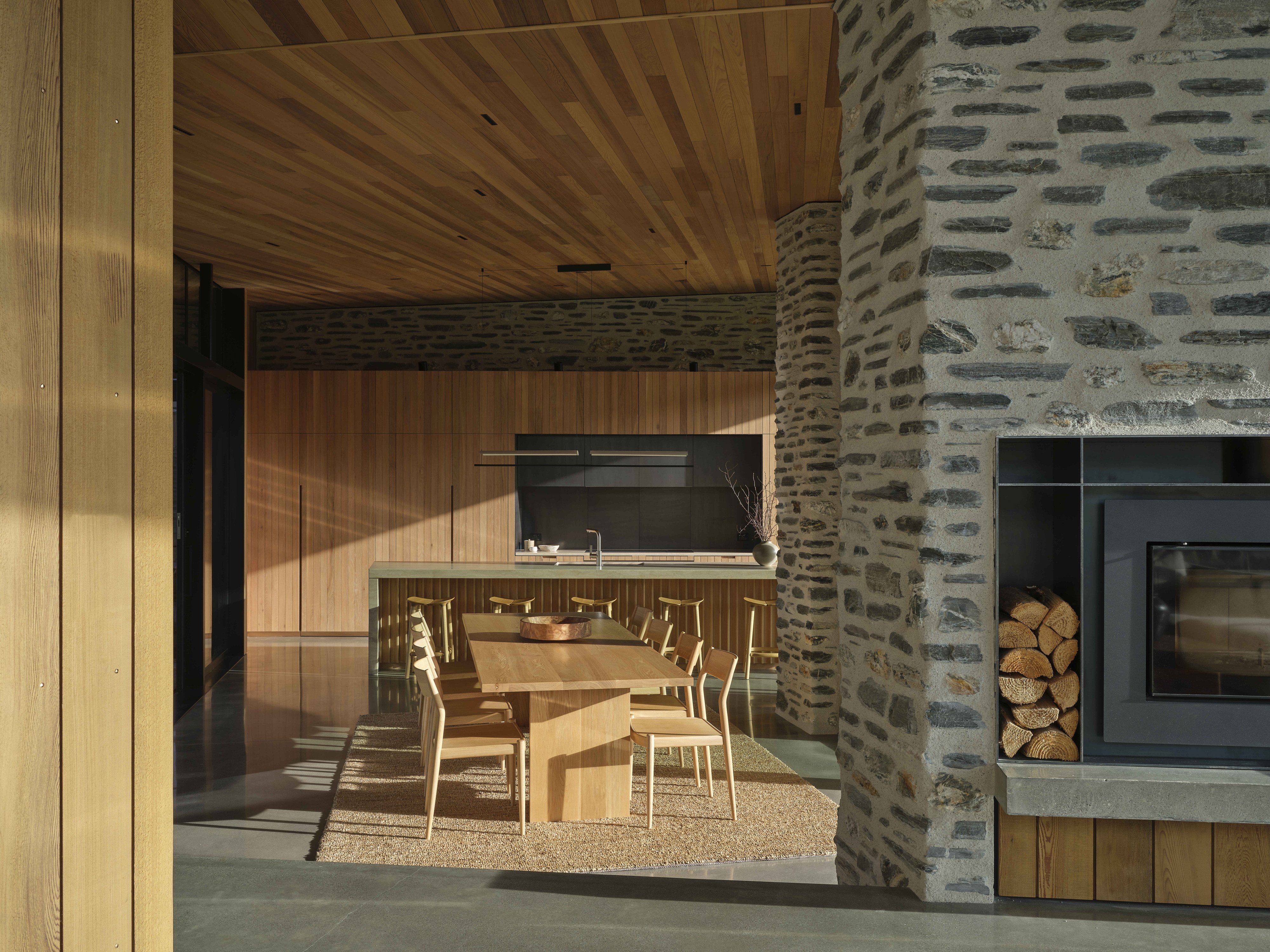
"We do a lot of walking in the [Southern] Alps.
"So it’s a place we had a lot of connection to," one owner said.
He said they wanted the house to nestle into the landscape rather than stand out, and "materiality" was important.
"It’s a very restrained material palette, which gives [the house] a very calm feel."
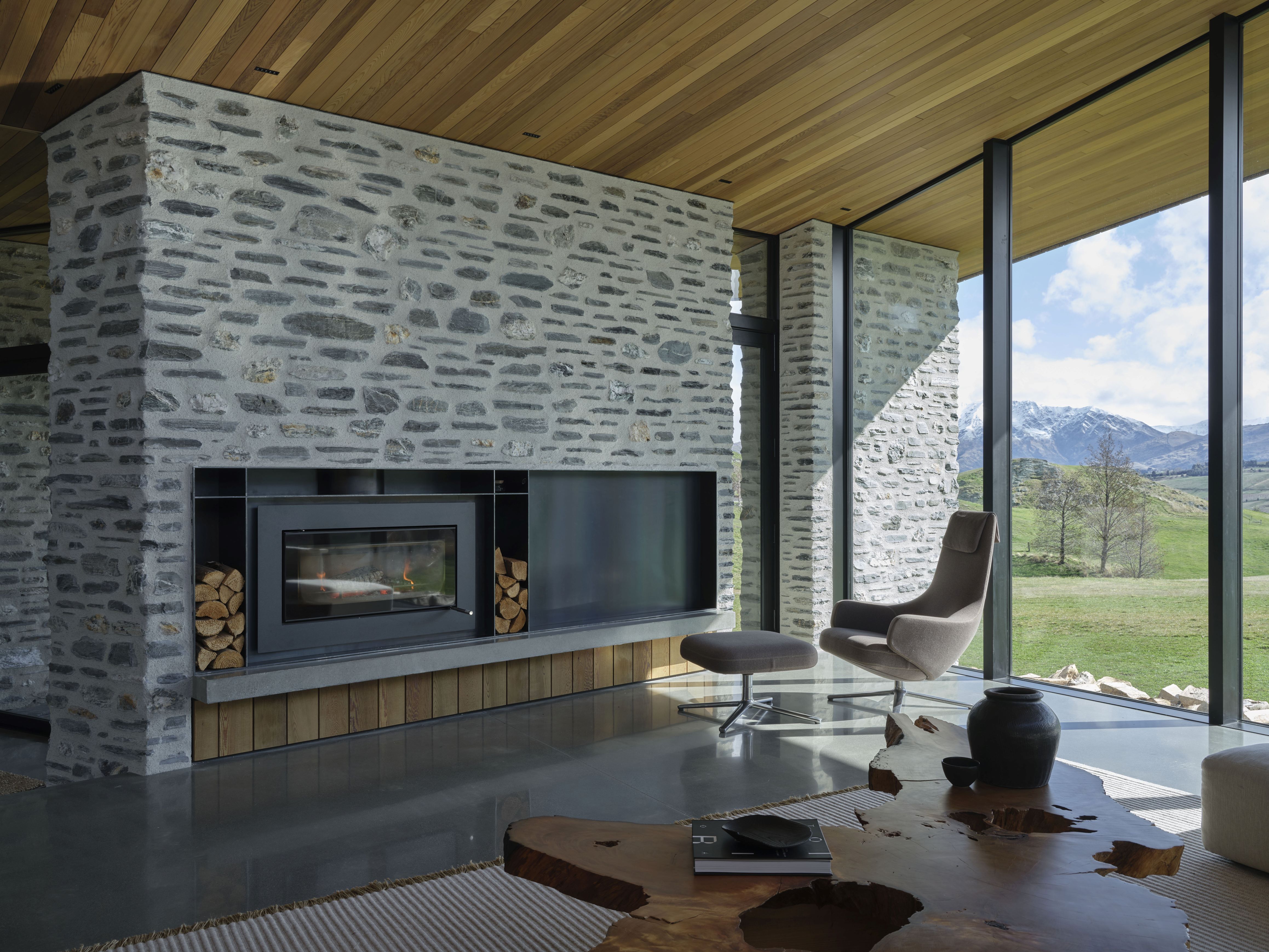
"It really grounds and connects the house to the landscape".
Minimising operational carbon was also a priority. While a passive house typically faces north and has minimal openings on other sides, Kārearea House presented an interesting design challenge because it had "iconic views" in three directions.
Deep eaves were carefully angled to allow heat gain to the concrete floors in winter, while blocking the harsh sun in summer. Wraps added to wall linings minimise air leakage and concrete block rather than precast concrete was used behind the schist work, allowing the building to be externally insulated. There’s also a heat recovery ventilation system and in-floor heating run by a heat pump.
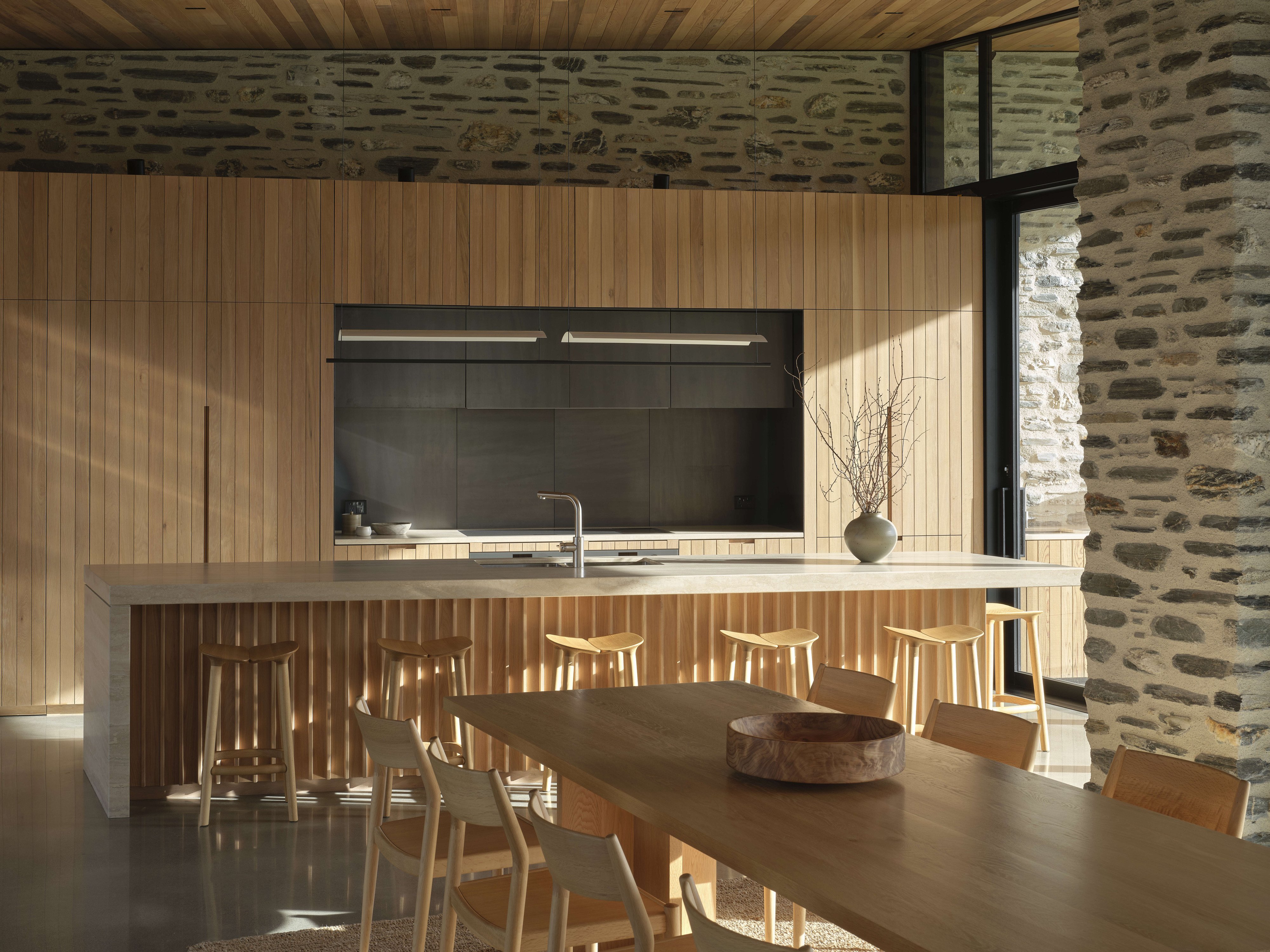
"At the moment, of course, we’re sucking a bunch of power from the grid because there’s not enough sun. But when you look at the energy consumption over the full year, we generate more than we use."
Built by Rogers Builders & Joiners (RBJ Ltd), the property was a winner at the recent southern architecture awards.
The judges described the building as thoughtfully detailed and expertly crafted, praising the way the overall form created "intriguing variations" in the volume of the interior spaces.
The owner said his family of four headed south as often as they could, using the house as a base for skiing, tramping and mountain biking.
"It’s a residence for us in the longer term but at the moment it’s an escape for us and our extended family and friends.
"It’s a great place to come and spend some time."
